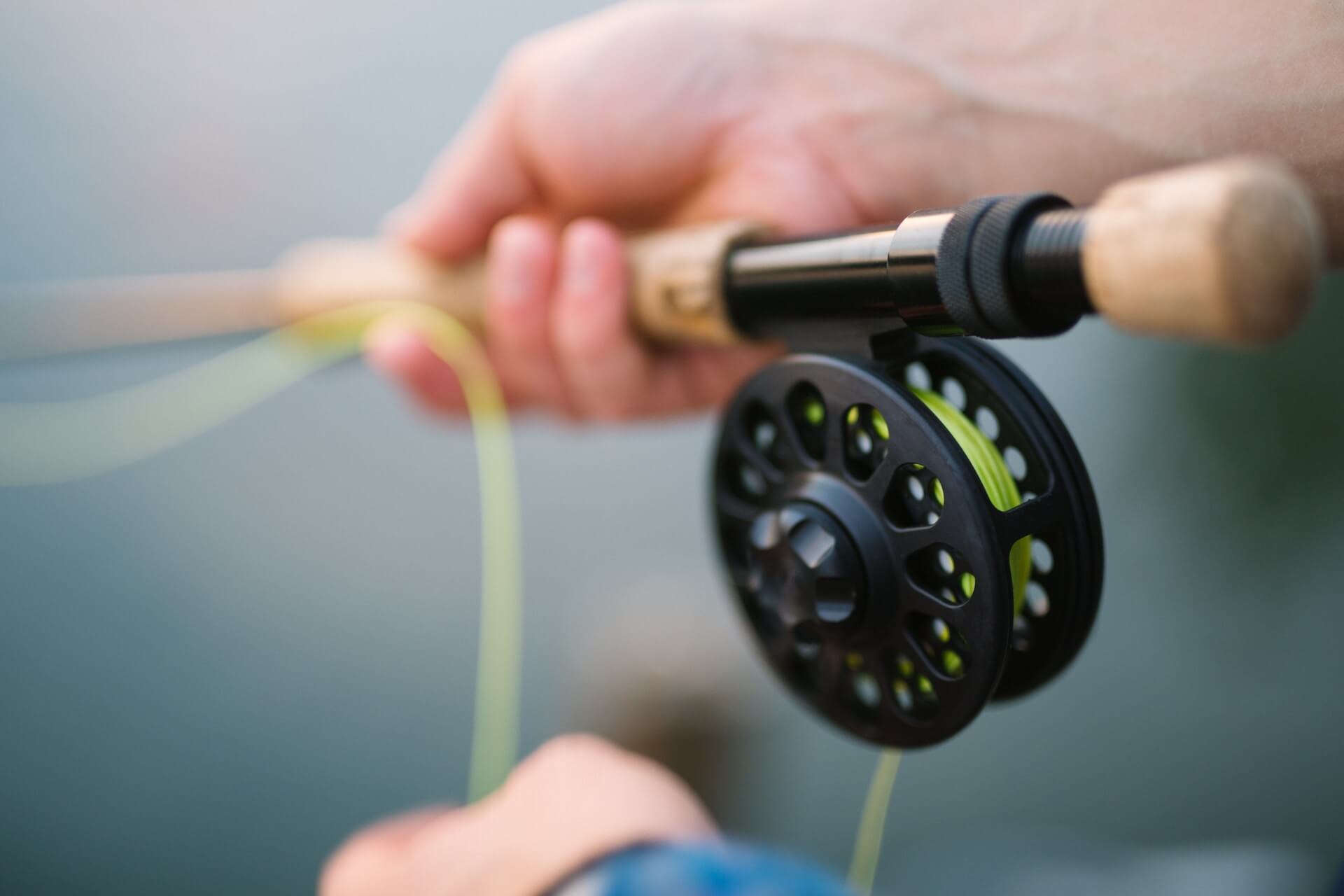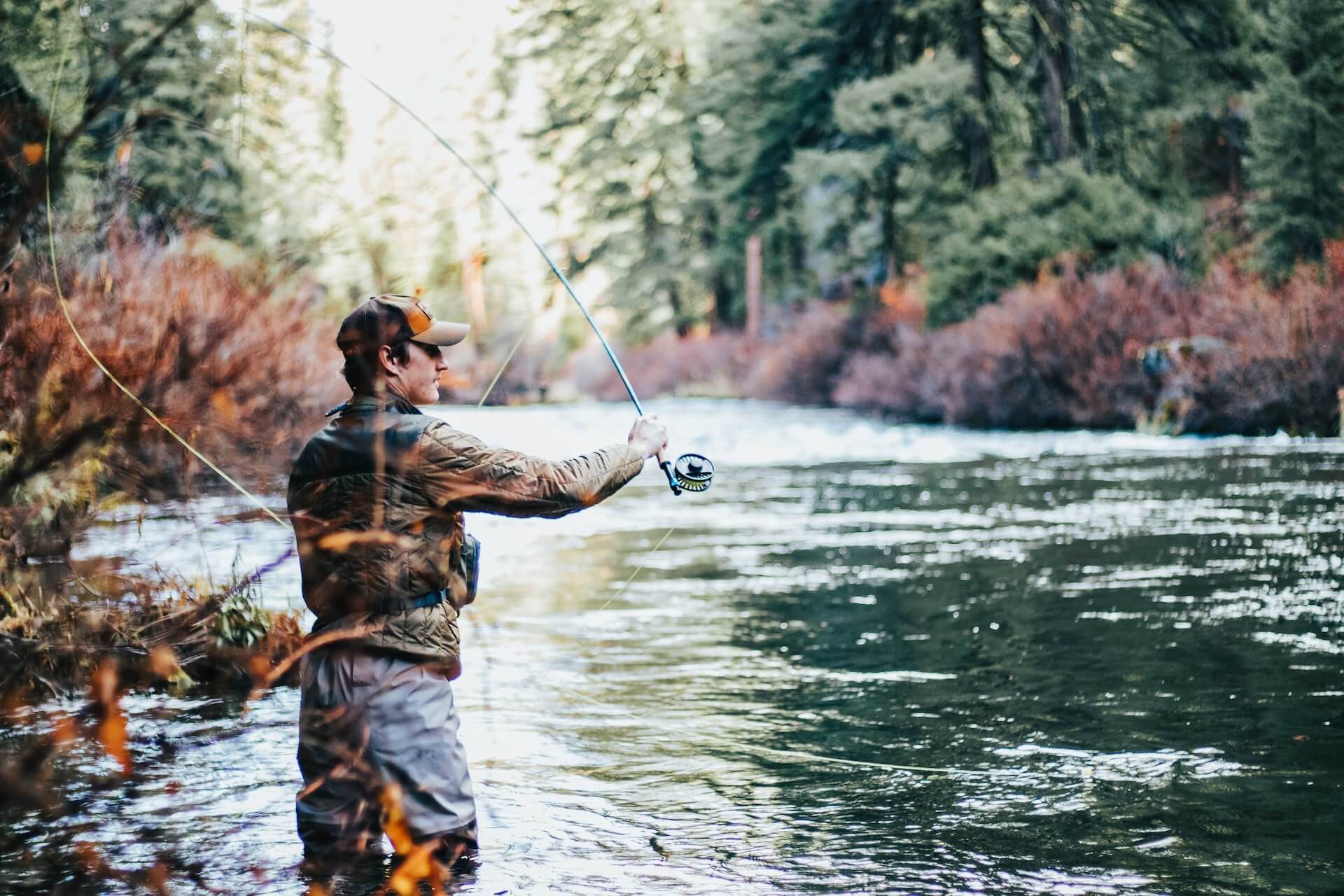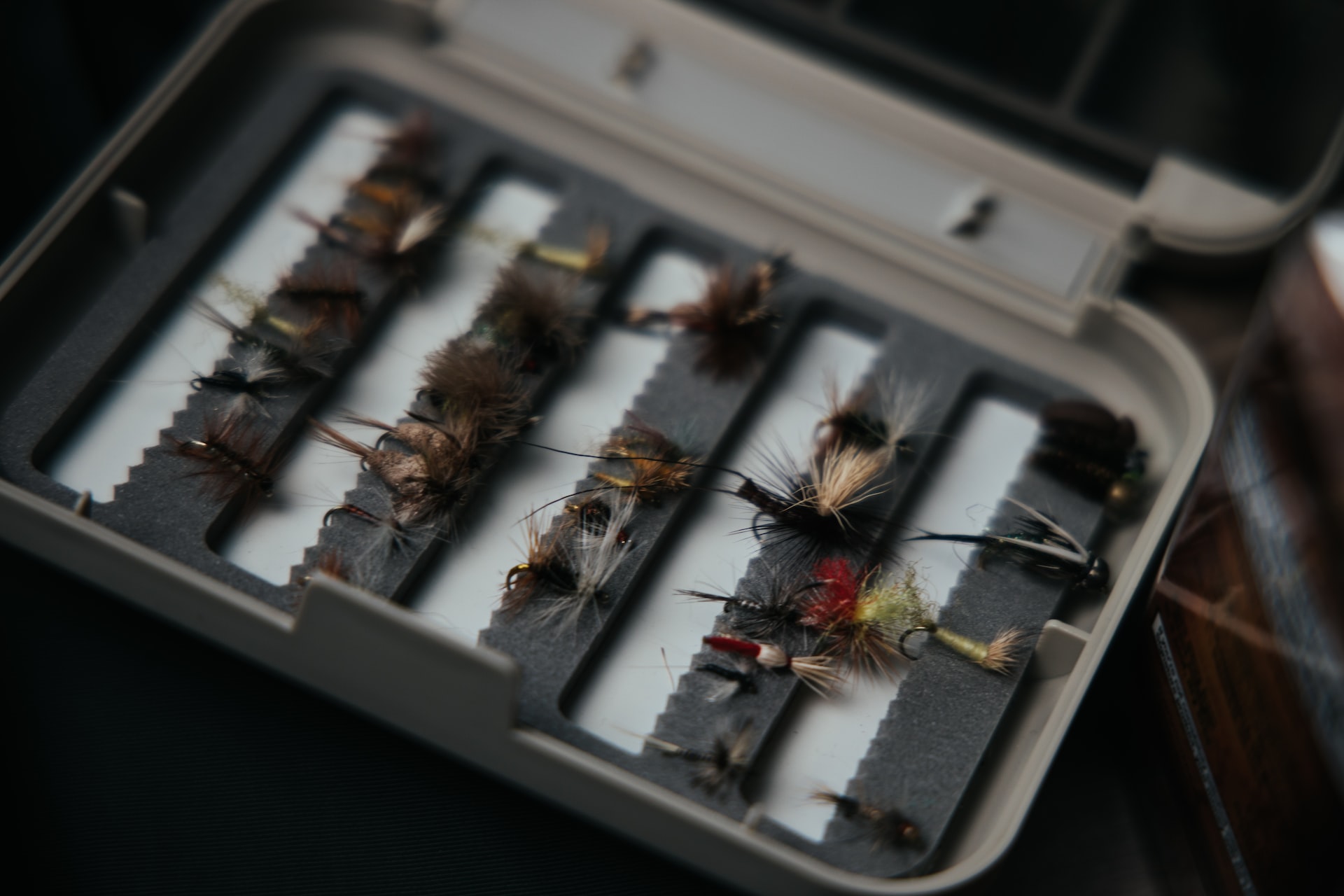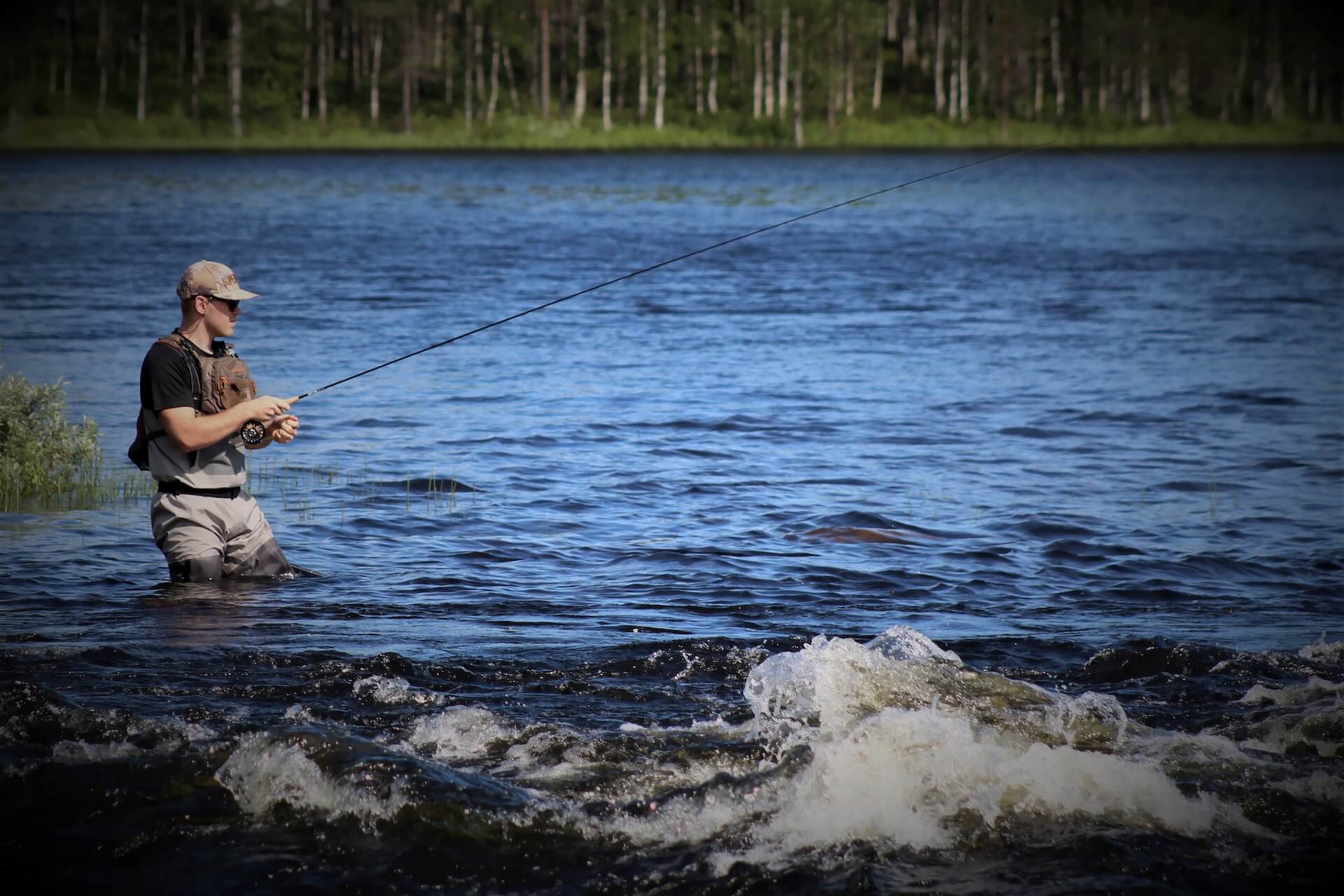It can be difficult to relax while fishing if you notice you’re not having any luck and the fish just aren’t biting. However, you’re probably just using the wrong equipment. So, if you want to find out what is the best length rod for fly fishing, you’ve come to the right place. You could be doing everything right, and you could have the best technique – it’s all worth nothing if you’re using the wrong equipment.
What Is Fly Fishing?
For those of you who are just starting to dip your toe into the amazing world of fishing, fly fishing is a special type of fishing, very different from all other techniques. It’s a unique way of catching fish by luring them with bait that is cast on the surface of the water instead of under it, like with all other techniques. By keeping the bait constantly moving right above the water, the fisherman makes it look like the bait is an insect (fly) flowing on top of the water, which is how this technique got its name.
This is a very smart and effective way to attract fish, but it is one of the most difficult techniques out there. It’s very delicate work, as you have to be very careful not to scare away the fish by shaking the bait too much. A very delicate touch is required, but you also need to have the right equipment for the job, so here is everything you will need to get the job done:
- Fly fishing line,
- Fly rod,
- Fly reel,
- The fly bait.
Fly Fishing Line, Rod, and Reel Are Very Different Than Traditional Versions
A good fly fishing line is one of the most crucial components needed for this technique. It’s a line connecting the rod and the bait, and it’s quite different from lines intended for regular fishing. This plastic line used to fly fish has to be much thicker, as it’s the only thing that provides the angler with casting weight. When it comes to regular lines, they have heavier baits at the ends, which is not the case with fly lines, which is why they need to be thicker.
Fly rods are another part of the equipment that is much different from the equipment used in regular fishing. When it comes to fly fishing, the weight is focused on the line, so the fly rod is much thinner and lighter. However, with regular techniques, a spin-fishing rod is used, and it’s a lot heavier than a fly one because the line is lighter.
Once again, a fly reel is very different from a traditional reel. With fly fishing poles, the reels are open, and your hand is positioned in front of the reel. Whereas traditional reels are closed, and the hand is positioned behind it.

You Will Need the Right Casting Technique
Most people think that this is the hardest method to fish with because of the way you have to handle the fly bait by constantly moving it around. However, casting is what truly makes this technique complicated. If you like to fish the good old regular way, with the bait underwater, you’ve probably cast the bait so many times that it’s become routine – you don’t even think about it. That’s why so many people have a problem with adjusting to the fly fishing method, the casting style is much different.
When you fish the traditional way, these are the motions you have to go through in order to cast a bait: you simply press a button on your reel, throw the rod backwards, and then extend it out. When it comes to fly fishing, the casting technique is quite different.
Here is how it goes: you need to let out the fly line in the amount of a rod and a half (or just a rod in case that’s your preference,), then you have to maneuver and throw the entire fly road backwards, behind you, and then you throw it forward over you. Of course, this is just the gist of it, fishers have developed various different techniques, but they all come down to this basic maneuver.

The Bait, or the Fly, Is the Most Crucial Component
In this type of fishing, the whole point is to cast the bait in a specific way that will make it look as if a fly or an insect is flowing and skirting on top of the water – it’s a great way to attract fish. So, the bait is not only called a fly, but it also resembles one. It’s very light and feathery, which is why the weight of the fly line needs to support it.
As you probably could have guessed, there is an insane amount of different types of fly baits. No matter what type of insect you can think of, chances are you will find a fly bait that will fit the description. There are too many to choose from, but here are three main categories.
Dry Flies
This is the most common type of bait. The reason why it’s called a dry fly is that this is the only type of fly bait that is meant to stay on the water’s surface. A dry fly is meant to resemble an adult insect on top of the water that will attract fish, and there are a thousand varieties to choose from, depending on the type of fish you’re trying to target. Here are the three most commonly used ones:
- One of the most popular dry fly types is “match the hatch” – insects that usually live around the water, they usually look like regular mosquitoes, mayflies, or midges.
- Attractors are also very popular. They are quite different than other, more typical types of fry flies, as they aren’t meant to look like or resemble an insect, they are simply supposed to get the attention of the fish. Attractors are very bright and shiny, which easily attracts fish.
Another interesting and popular type are terrestrial bugs – they are far more realistic looking than typical “match the hatch” baits. They are great for catching fish like trout, and the trick is they float much better on the water as they are often made out of foam.
Nymph Flies
Something that is very unique to the nymph type of flies is the fact that they can be both above water and underwater bait, which makes them one of the most successful fly baits. Nymph flies are supposed to resemble aquatic insects in their larvae stage, which means they can float either right under the surface of the water, or right at the surface. The only problem with this type of fly bait is that it’s very hard to see when the fish bites if the fly is sitting below the water unless you’re either close to it or using a strike indicator.
Streamer Flies
Streamers are the largest type of flies. They are supposed to resemble insects flying through the air and occasionally landing on top of the water. When using streamer flies, it’s very important to get the motion down right – you’re supposed to imitate a live insect by occasionally tugging at your fly line as if the bait was jumping on top of the water, attracting the fish.
Why Is Fly Fishing Better Than Other Standard Techniques?
If fly fishing is so difficult to master, why do people continue to use this technique instead of opting for the old-fashioned way of fishing? Is fly fishing that much better? For starters, it offers you the option to target almost any kind of fish you’d like. The bait is meant to imitate food the fish would normally eat, and this method has proven to be the most effective one when it comes to rivers.
Another thing that makes this method so effective is the fact that the bait is so lightweight that there is almost no possibility it could scare the fish away, while regular baits are almost guaranteed to make a splash or at least some noise that will scare the fish.
What Are Some Disadvantages You Should Take Into Consideration?
While this method is one of the most effective ones, there are some disadvantages you should keep in mind. First of all, this technique is much harder to master, and you will need a lot of time to get the hang of it. You will need a lot of room for casting your fly properly, and even when you have all the room you need, it’s very difficult to cast it perfectly.
Another thing you should take into consideration is the fact that you will need a lot of money if you want to fly fish – equipment is more expensive than it is for regular spin-fishing.

How Do You Pick the Perfect Fly Fishing Rod?
When it comes to fly fishing, proper equipment is mandatory. And there aren’t that many difficult decisions to make – picking out your fly is quite easy, a good line is a bit expensive but it’s not hard to find; the same goes for the reel, but picking out a rod can be complicated. There are a few things you need to consider when trying to find your perfect fly fishing rod:
- Fly rod action – in simpler terms, action is meant to describe the flexibility of the rod. You can choose between three types: fast, medium, and slow action rods. The fast action ones are the stiffest, which means they are best suited for experienced fishers. Medium ones are somewhere in between, they’re versatile and a good fit for anyone. And lastly, slow action rods are extremely flexible and great for beginners, as they are the easiest to use out of all three types.
- Fly Line Weight – It might be confusing as to why you need to care about the weight of the line when choosing rods, but when it comes to fly fishing, remember that the weight comes from the line, so everything needs to be balanced. You need to make sure the fly line and the rod will match up perfectly.
- The material of the rod – the material you choose for your rod is extremely important, and it could really have an impact on your performance. Fly rods are most commonly made out of graphite, fiberglass, and bamboo.
- The length of the rod – The length of the rod is what makes the biggest difference in the way your rod will perform, so it’s very important to get it right.
What Is the Best Length Rod for Fly Fishing?
If you want to have the best fly fishing rod and master this technique, the most important step is to find the right length of your rod. The length can range anywhere from 6 to 11 feet, depending on where you plan to fish and what types of fish you’re targeting. The most commonly used length is 9 feet, it’s the most versatile as it will be suitable for all conditions and all levels of expertise. However, the better the fit of the rod, the better your performance will be.
If you plan to fish in smaller, still waters like rivers, then you should get a smaller rod, up to 8 feet. They’re much more precise, which is important when dealing with small casts. Short rods are ideal for lifting heavier fish in smaller streams and in windy conditions since they offer more leverage and control.
Longer rods are meant for catching fish in larger, deeper waters like big lakes or rivers, where you have plenty of space to cast your fly. You will have faster line pick-up and better mending ability, as well as better line control.

Now That You Know How to Pick the Right Equipment, You’re All Set to Go Fly-Fish Until You Develop the Perfect Technique
Once you’ve picked out a fly fishing rod that best suits all your needs, there is nothing stopping you from catching some fish. Practice makes perfect, and this is a very difficult technique to master, so don’t be disappointed if, even after getting the best gear, you still aren’t getting the best results. Be patient and develop your own style of fishing.







